Bicuspid aortic valve is one of the most common congenital lesions of the cardiovascular system. In this entity only two aortic valve cusps are developed. Patients with BAV commonly have aortic narrowing and regurgitation of variable severity.
The cause is congenital. Most are usually isolated mild lesions but are prone to progressive calcification, and advancing aortic stenosis later in life. Sometimes it is associated with other left sided lesions including coarctation of the aorta, and congenital mitral stenosis. In the most severe forms severe stenosis and atresia are present. The full development of all the structures in the heart depends on adequate flow through them. Thus if there is limitation of flow at one level there are often maldevelopments down stream.
With time bicuspid aortic valve becomes more fibrotic and the gradient increases and the left ventricle hypertrophies to accommodate the increased pressure and work load. The structural distortion of the valve predisposes it to infection and BAV therefore can be complicated by bacterial endocarditis.
Aneurysmal disease of the ascending aorta is thought to relate to an aortopathy
Other syndromes associated with bicuspid aortic valve and ascending aortic aneurysm include Turner syndrome (bicuspid valve present in approximately 30 percent), Loeys-Dietz syndrome
Other lesions coarctation of the aorta, supravalvular aortic stenosis, subvalvular aortic stenosis, ventricular septal defect patent ductus arteriosus, and sinus of Valsalva aneurysm
A bicuspid aortic valve is present in approximately 15 to 20 percent of patients with sinus of Valsalva aneurysms.
Heart murmurs result from either regurgitation or stenosis and are best diagnosed by echocardiography
Surgery with replacement of the valve is indicated when the pressure gradient become high, usually with gradients that are greater than 50-60mmHg across the valve.
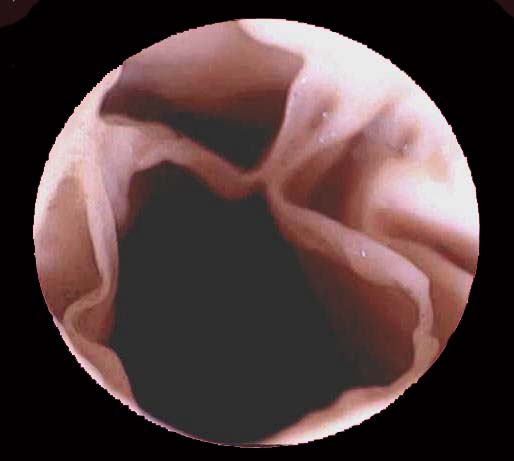
Fusion of the inter-coronary commissure
Fusion of the right and left coronary leafletas shown here is the most common (70 to 85 percent)
Ashley Davidoff
Bicuspid Aortic Valve with Hypoplasia

15049
Ashley Davidoff MD

07951b
Ashley Davidoff MD

33169b Ashley Davidoff
Keywords:
cardiac heart echo aorta bicuspid aortic valve congenital imaging cardiac echo
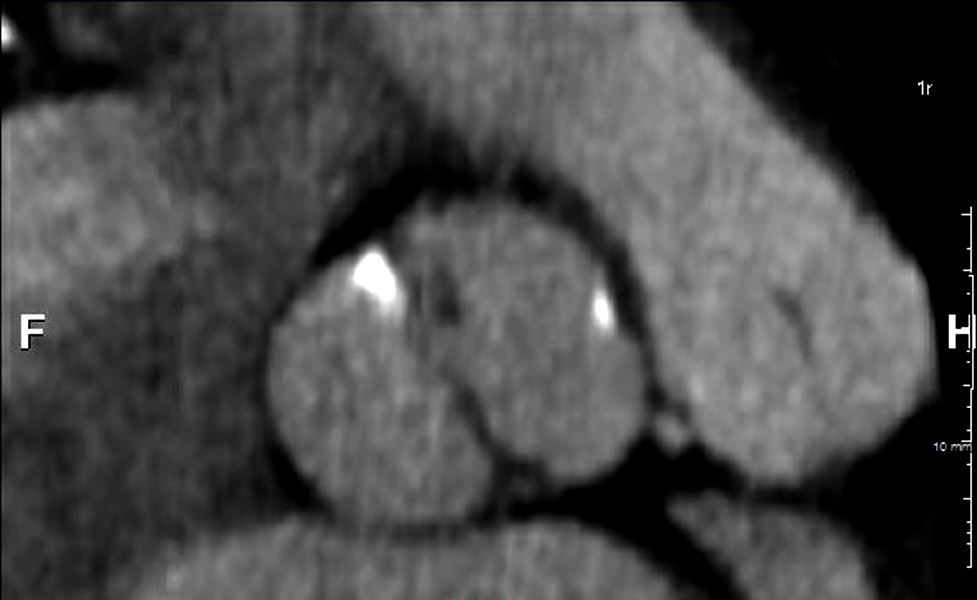
demonstrating the aortic valve with two cusps. The patient has a diagnosis of bicuspid aortis valve
Ashley Davidoff
| Bicuspid Aortic Valve
The Common Vein Copyright 2007 Ashley Davidoff MD
Bicuspid Aortic Valve (BAV) Bicuspid aortic valve is one of the most common congenital lesions of the cardiovascular system. In this entity only two aortic valve cusps are developed. Patients with BAV commonly have aortic narrowing and regurgitation of variable severity. The cause is congenital. Most are usually isolated mild lesions but are prone to progressive calcification, and advancing aortic stenosis later in life. Sometimes it is associated with other left sided lesions including coarctation of the aorta, and congenital mitral stenosis. In the most severe forms severe stenosis and atresia are present. The full development of all the structures in the heart depends on adequate flow through them. Thus if there is limitation of flow at one level there are often maldevelopments down stream. With time bicuspid aortic valve becomes more fibrotic and the gradient increases and the left ventricle hypertrophies to accommodate the increased pressure and work load. The structural distortion of the valve predisposes it to infection and BAV therefore can be complicated by bacterial endocarditis. Heart murmurs result from either regurgitation or stenosis and are best diagnosed by echocardiography Surgery with replacement of the valve is indicated when the pressure gradient become high, usually with gradients that are greater than 50-60mmHg across the valve. Bicuspid Aortic Valve with Hypoplastia
Isolated Congenital BAV
|

 Hypolastic Annulus, Bicuspid Aortic Valve and Malposition of Coronary Ostium
Hypolastic Annulus, Bicuspid Aortic Valve and Malposition of Coronary Ostium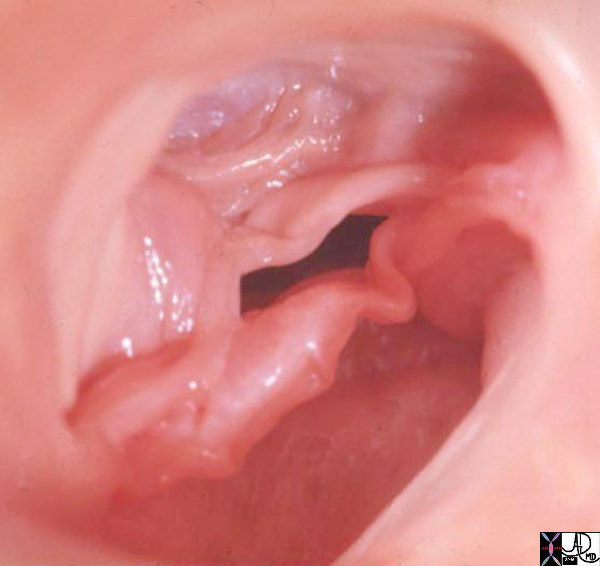 Bicuspid Aortic Valve Caused by Fusion of Two Commissures Between the Right and Non Coronary Cusp
Bicuspid Aortic Valve Caused by Fusion of Two Commissures Between the Right and Non Coronary Cusp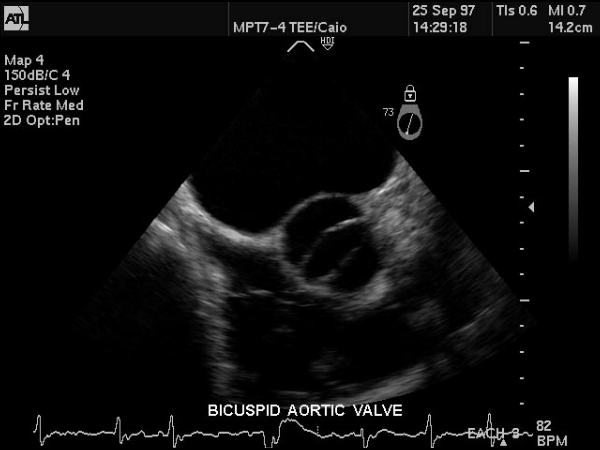 Bicuspid Aortic Valve
Bicuspid Aortic Valve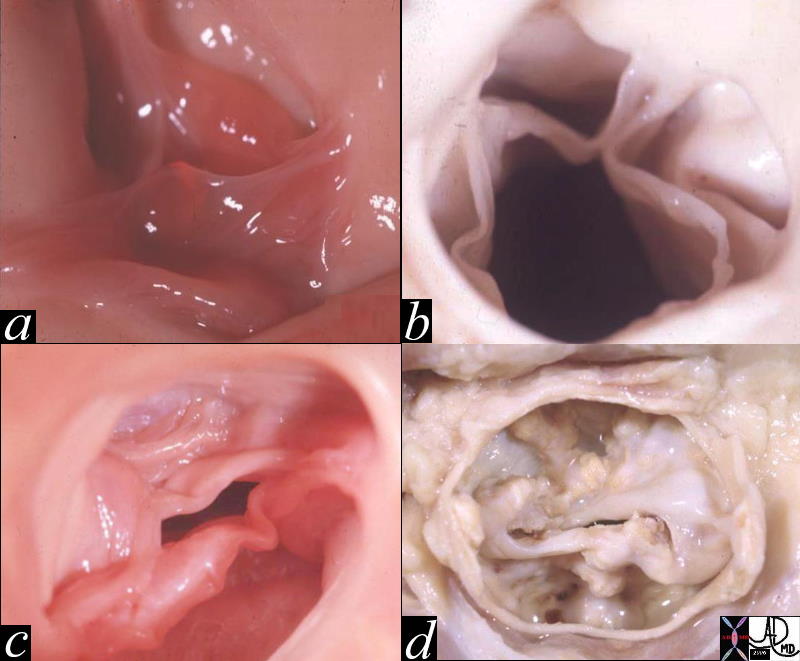 Normal and Thickened Aortic Valve over Time
Normal and Thickened Aortic Valve over Time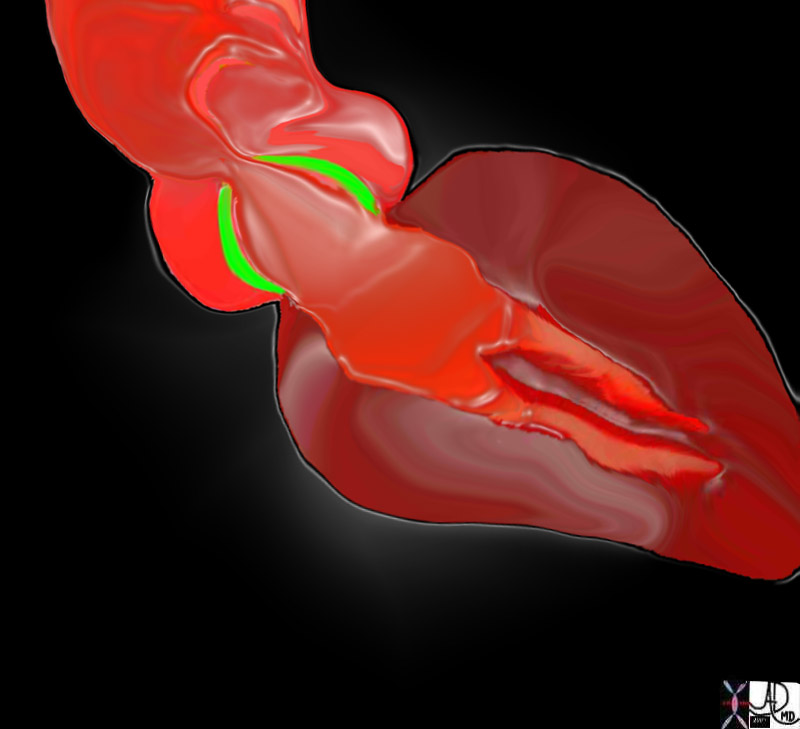 Aortic Stenosis – Doming of the Valve
Aortic Stenosis – Doming of the Valve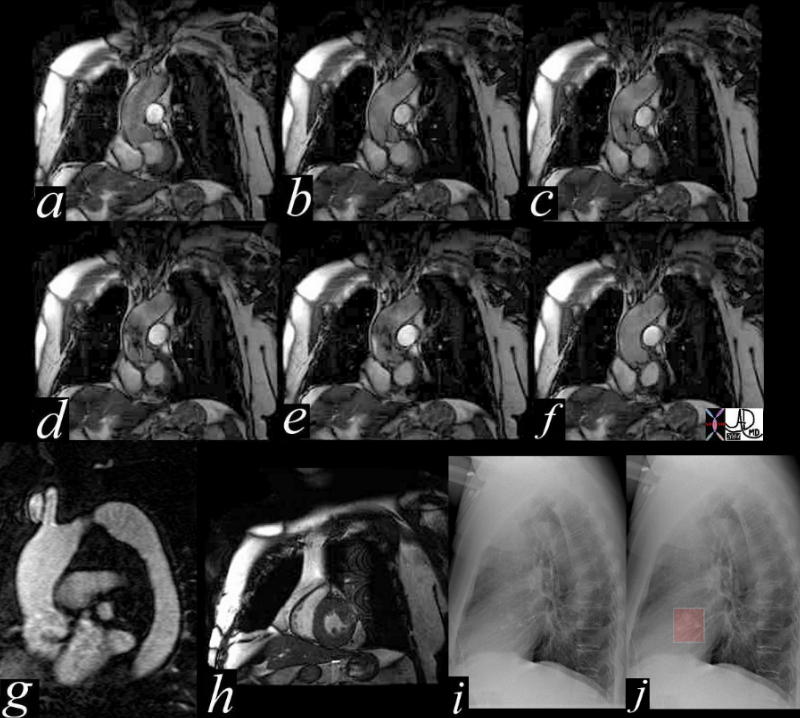 Aortic Stenosis – Turbulence Shown by MRI
Aortic Stenosis – Turbulence Shown by MRI